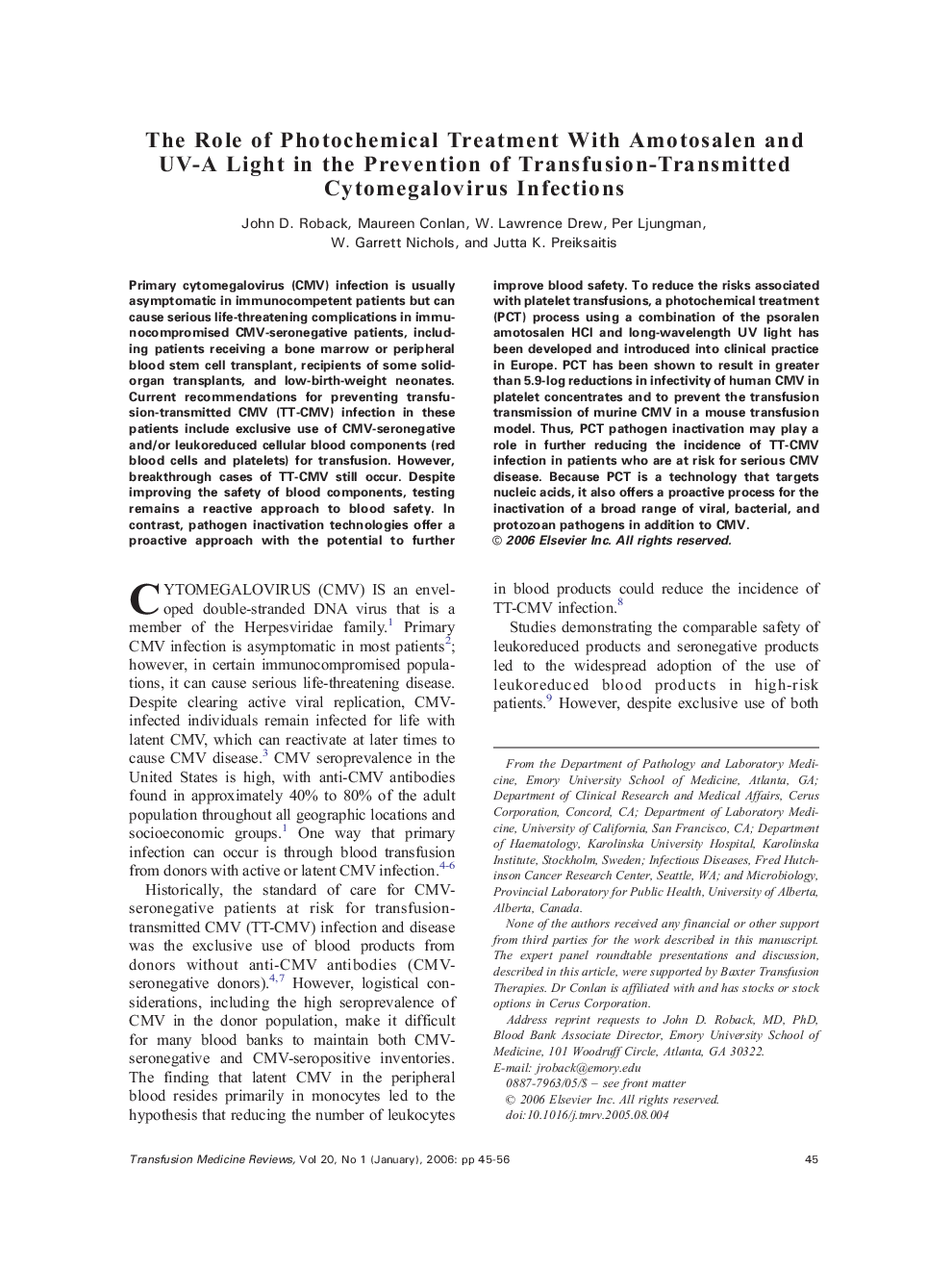| Article ID | Journal | Published Year | Pages | File Type |
|---|---|---|---|---|
| 3337044 | Transfusion Medicine Reviews | 2006 | 12 Pages |
Primary cytomegalovirus (CMV) infection is usually asymptomatic in immunocompetent patients but can cause serious life-threatening complications in immunocompromised CMV-seronegative patients, including patients receiving a bone marrow or peripheral blood stem cell transplant, recipients of some solid-organ transplants, and low-birth-weight neonates. Current recommendations for preventing transfusion-transmitted CMV (TT-CMV) infection in these patients include exclusive use of CMV-seronegative and/or leukoreduced cellular blood components (red blood cells and platelets) for transfusion. However, breakthrough cases of TT-CMV still occur. Despite improving the safety of blood components, testing remains a reactive approach to blood safety. In contrast, pathogen inactivation technologies offer a proactive approach with the potential to further improve blood safety. To reduce the risks associated with platelet transfusions, a photochemical treatment (PCT) process using a combination of the psoralen amotosalen HCl and long-wavelength UV light has been developed and introduced into clinical practice in Europe. PCT has been shown to result in greater than 5.9-log reductions in infectivity of human CMV in platelet concentrates and to prevent the transfusion transmission of murine CMV in a mouse transfusion model. Thus, PCT pathogen inactivation may play a role in further reducing the incidence of TT-CMV infection in patients who are at risk for serious CMV disease. Because PCT is a technology that targets nucleic acids, it also offers a proactive process for the inactivation of a broad range of viral, bacterial, and protozoan pathogens in addition to CMV.
